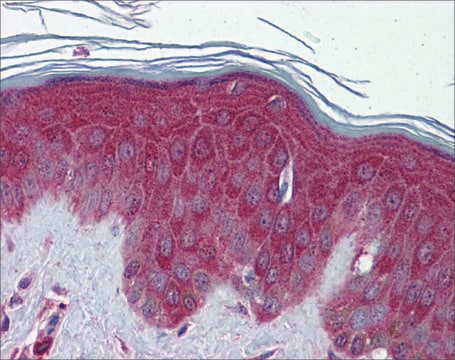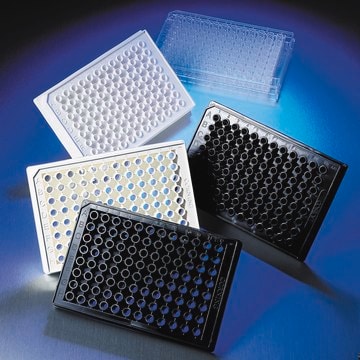CLS3650
Corning® 96 well NBS™ Microplate
flat bottom, black polystyrene, bag of 25 ×, non-sterile, lid: no
Synonym(s):
96 multiwell plates, 96 well microplates, 96 well microtiter plates, 96 well plates
About This Item
Recommended Products
material
black polystyrene
flat bottom
polystyrene
round clear wells
sterility
non-sterile
non-sterile
feature
lid: no
lid: no
skirt
plate format: 96 well standard
packaging
case of 100
pack of 25
bag of 25 ×
manufacturer/tradename
Corning 3650
maximum volume
360 μL
size
96 wells
working volume
200 μL
color
black
binding type
NBS™ (non-binding surface)
Looking for similar products? Visit Product Comparison Guide
Related Categories
General description
- Bottoms are 60% thinner than conventional polystyrene plates, resulting in lower background fluorescent and enabling readings down to 340nm
- Designed to reduce well-to-well crosstalk during fluorescent assays
- Nonbinding (NBS) surface is a Corning proprietary treatment technology used on polystyrene microplates to create a nonionic hydrophilic surface (polyethylene oxide-like) that minimizes molecular interactions
- Ideal for reducing protein and nucleic acid binding at low concentrations, and increasing assay signal to noise
- Without lids, lids supplied separately
- Recommended working volume of 75 to 200μL
- Conforms to standard microplate footprint and dimensions
Legal Information
Certificates of Analysis (COA)
Search for Certificates of Analysis (COA) by entering the products Lot/Batch Number. Lot and Batch Numbers can be found on a product’s label following the words ‘Lot’ or ‘Batch’.
Already Own This Product?
Find documentation for the products that you have recently purchased in the Document Library.
Customers Also Viewed
Our team of scientists has experience in all areas of research including Life Science, Material Science, Chemical Synthesis, Chromatography, Analytical and many others.
Contact Technical Service





